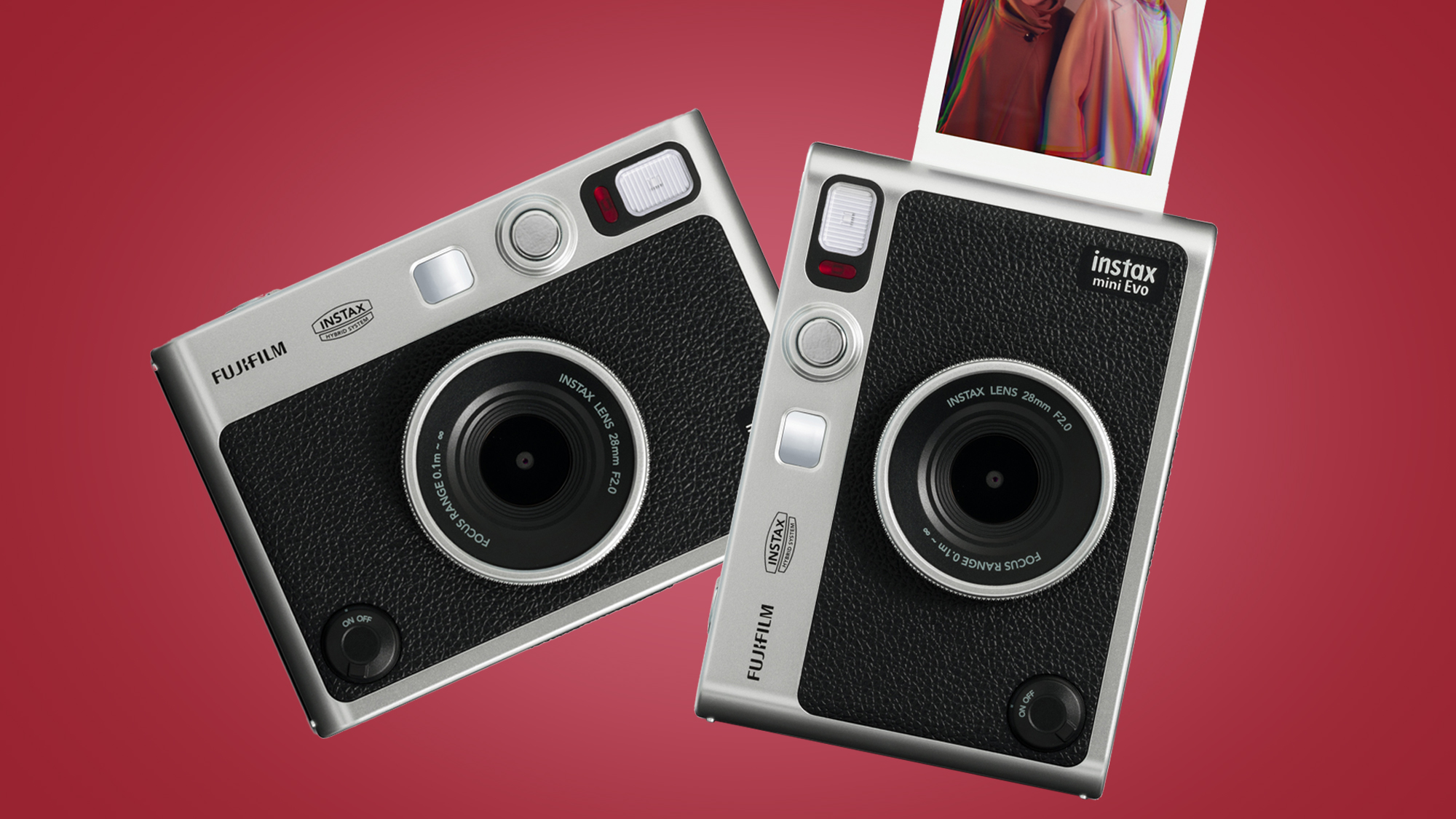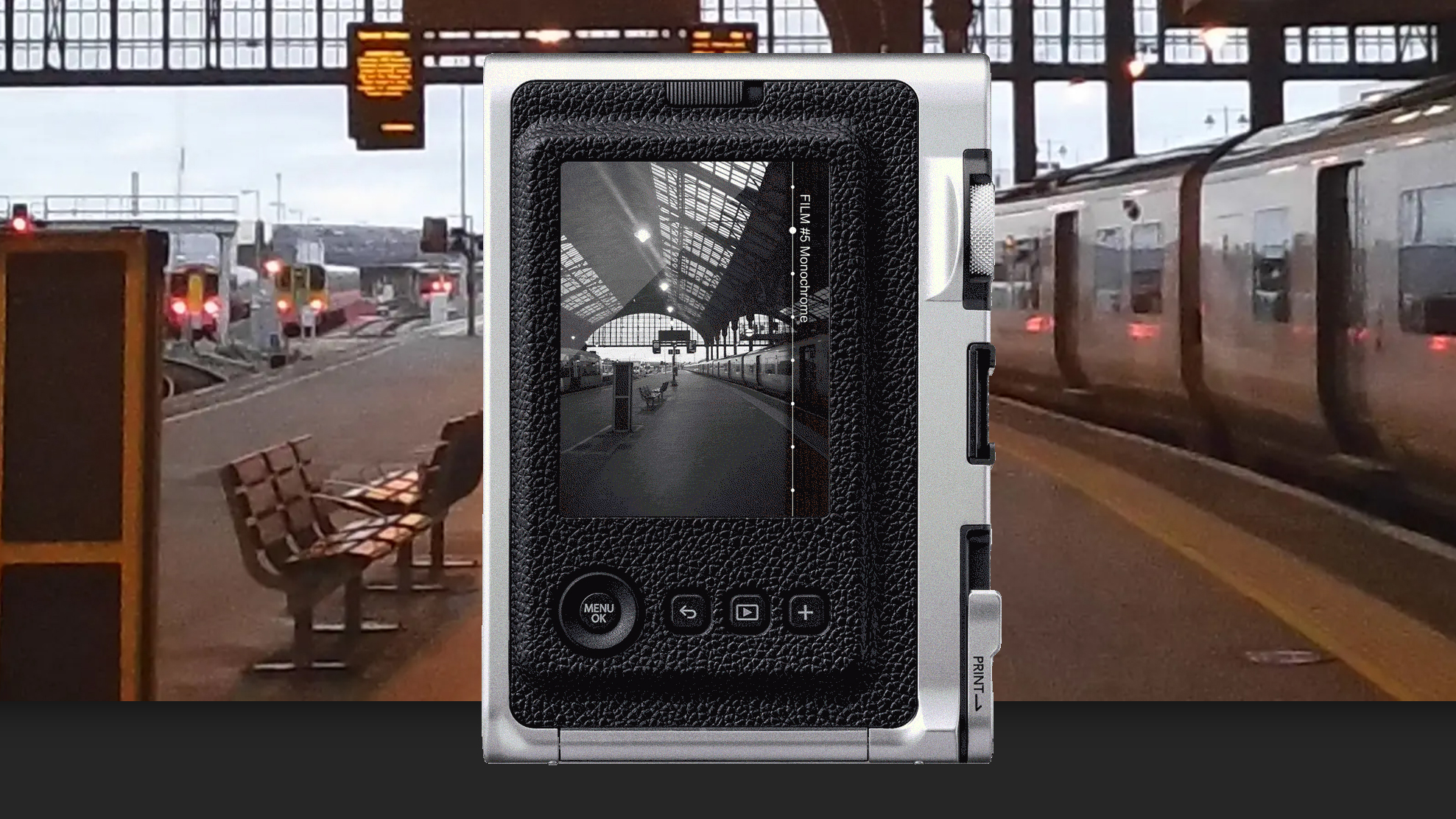Fujifilm Instax Mini Evo is a hybrid instant camera with a stunning retro design
Premium instant camera lets you print your phone snaps

If you're a fan of both instant cameras and classic film cameras, Fujifilm may have just made your dream snapping companion – it's combined the two things in the charming Fujifilm Instax Mini Evo, a new film-digital hybrid.
The Instax Mini Evo is the latest in its line of hybrid instant cameras, which combine the appeal of producing instant physical snaps with the versatility and convenience of digital. This means that, unlike more traditional models like the Instax Mini 11, it comes with a 3-inch LCD on the back, among other smartphone-style conveniences.
As its name suggests, the camera shoots on Instax Mini film, which means credit-card sized snaps with an image area of 4.6x6.2cm (or 1.8x2.4in). But the Instax Mini Evo's digital sensor means you have a lot more creative shooting options than more basic Instax cameras, before you print out your 600dpi snaps.
- These are the world's best instant cameras
- Check out the best Black Friday camera deals so far
- Read our in-depth Fujifilm Instax Mini 11 review
This means you get ten 'lens modes' (for example, soft focus, vignette or fish-eye) and another ten 'film effect filter' options, like Vivid, Monochrome and Red. The latter aren't quite as precise as the 'film simulation' modes on Fujifilm's X-series cameras, which are based on specific film stocks, but they do boost your creative options.
But arguably the most appealing thing about the Fujifilm Instax Mini Evo is its design. Its faux-leather finish has been echoed on other models, like the Fujifilm Instax Mini 40, but the design looks even more premium here – and includes some brilliant little touches that recall classic film cameras.
These include a lever, which you use to print a photo rather than move the film onto its next frame, and a dial on the top for switching effects. The fixed lens, which has a 35mm equivalent field of view and a f/2.0 aperture, also has a dial that can be turned to change between those lens modes.
As the Instax Mini Evo is effectively a mini printer, you can also print mini photos from your smartphone – and send photos taken on the camera, complete with their white border, to your phone, too.
Get daily insight, inspiration and deals in your inbox
Sign up for breaking news, reviews, opinion, top tech deals, and more.
The best part, if you're in Australia, you can pick up the Instax Mini Evo from December 1, 2021, just in time for Christmas, for AU$299 a pop. Instant camera fans in the US or UK, though, you will need to wait till February 2022 and it will set you back $199 / €199 (UK pricing will be confirmed in early 2022). If you need something sooner, the Black Friday sales should have the odd camera offer for you.
Analysis: The perfect (belated) Christmas present

It's a shame that the Fujifilm Instax Mini Evo won't be available outside Japan until early February – and it was surely intended to launch in time for the Christmas holidays. But it carries enough charm to be a potentially popular choice for instant camera beginners in 2022.
The Instax Mini Evo has a small 1/5-inch CMOS sensor, so we can still expect it to produce lo-fi image quality. And hybrid models like this always aren't considered 'true' instant cameras by diehards, because of their digital sensors.
But like the Fujifilm Instax Square SQ20, the plus side for beginners is that hybrid cameras remove some of the guesswork from instant photography by letting you tweak the shots before you print – or simply print out snaps from your smartphone's technically superior camera.
The Instax Mini Evo's little retro design touches – like cranking the lever to print a photo – could also make it irresistible to retro camera fans, too. It certainly looks like a lot of fun to shoot with, and that's always been the point of instant cameras – and the reason why they've been so popular in recent years.
Fujifilm is also promising that the 600dpi prints the camera produces will be Instax's "highest-ever quality instant prints to date", so we're looking forward to putting that to the test early in the new year.
- These the world's best cameras for kids

Mark is TechRadar's Senior news editor. Having worked in tech journalism for a ludicrous 17 years, Mark is now attempting to break the world record for the number of camera bags hoarded by one person. He was previously Cameras Editor at both TechRadar and Trusted Reviews, Acting editor on Stuff.tv, as well as Features editor and Reviews editor on Stuff magazine. As a freelancer, he's contributed to titles including The Sunday Times, FourFourTwo and Arena. And in a former life, he also won The Daily Telegraph's Young Sportswriter of the Year. But that was before he discovered the strange joys of getting up at 4am for a photo shoot in London's Square Mile.